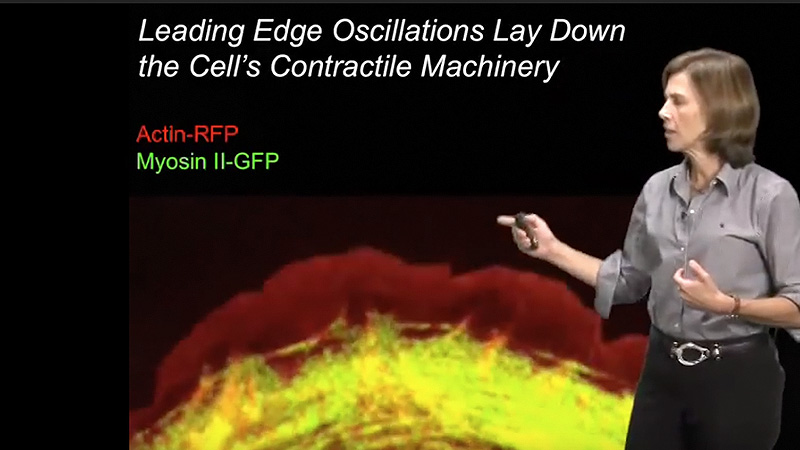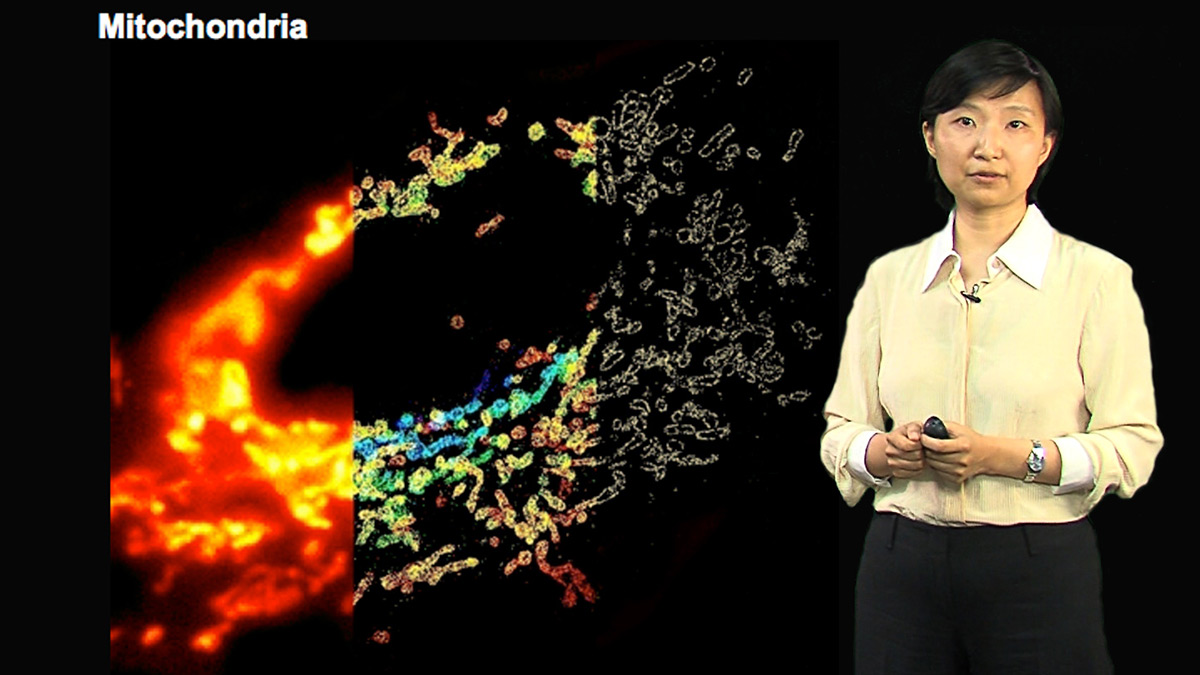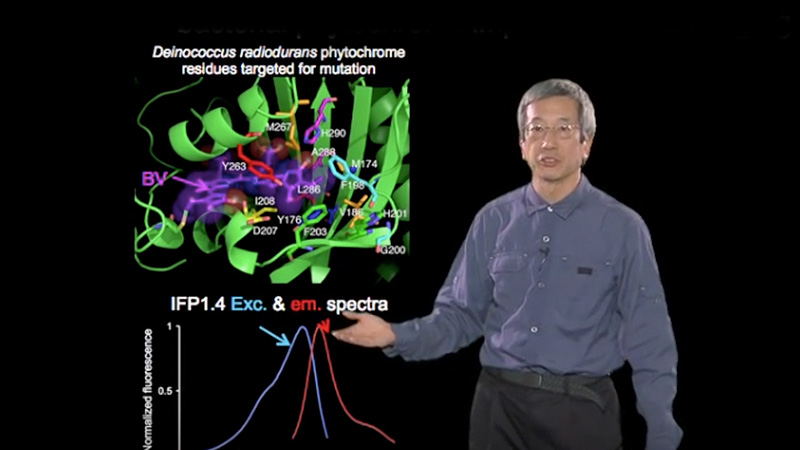Talk Overview
This talk introduces confocal microscopy, and discusses optical sectioning, reconstruction of 3D images, and how the laser-scanning confocal microscope and spinning disk confocal microscope work.
Questions
- True or False. In a confocal microscope, the pinhole is placed between the scanning mirrors and the detector.
- Which of the following comparisons of spinning disk versus laser point scanning confocal is incorrect?
- Spinning disk but not laser scanning uses ccd cameras as the detector
- Spinning disk uses different pinholes for the excitation and emission light paths
- Spinning disk tends to produce less photodamage to the specimen
- Spinning disk is a faster imaging technique
- Why does the spinning disk produce an inferior z section than laser point scanning confocal when imaging 60 microns deep into a specimen?
- The intensity of a laser point scanning confocal is inherently brighter
- The PMT of a laser point scanning confocal is more efficient than the spinning disk camera
- Out of focus light can be passed through adjacent pinholes in a spinning disk
- The laser point scanning confocal rate can be adjusted to illuminate each point for longer
- The pinhole of the confocal is used to:
- Reduce the beam size of the excitation beam
- Reject emission light from out-of-focus planes
- Improve resolution
- A and B
- A, B and C
Answers
View AnswersSpeaker Bio
Kurt Thorn

Kurt Thorn is an Assistant Professor of Biochemistry and Biophysics at UCSF and Director of the Nikon Imaging Center – a facility that provides cutting edge light microscopy equipment to UCSF researchers. Kurt can be followed on his blog at http://nic.ucsf.edu/blog/. Continue Reading









Leave a Reply